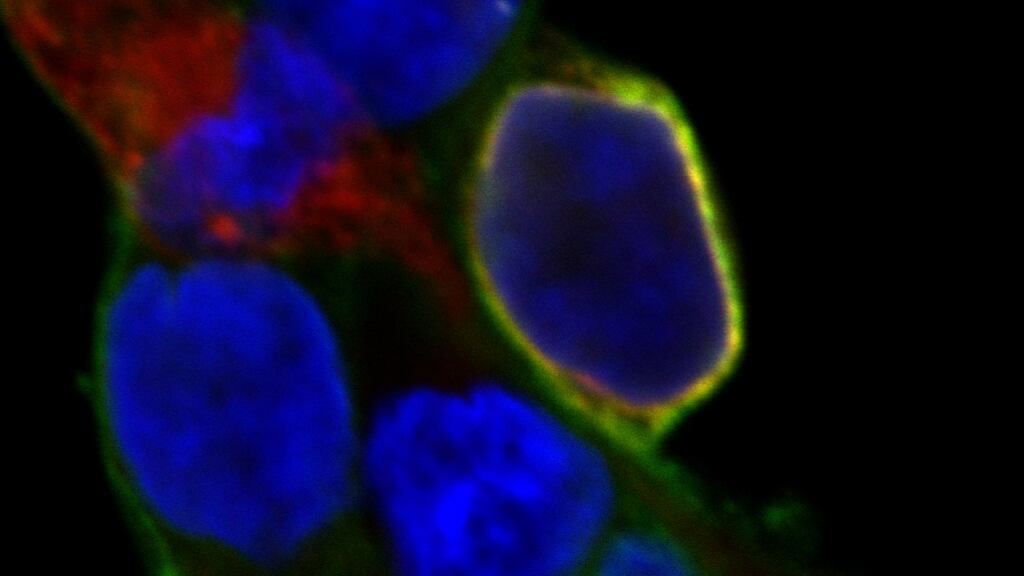Irish scientists are using a little bit of light as a way to take the radioactivity out of drug development.
It means developing possible new drugs can be done without handling radioactive materials and there will be no radioactive waste to worry about afterwards.
The discovery comes from researchers based at Maynooth University and Trinity College Dublin, with the details published on Tuesday in the Nature publication Scientific Reports.
About half of all potential new drugs being produced depend on a method that uses radioactive “probes” that show what the drug is doing in an in vitro tissue system, explains lead researcher Dr Conor Breen of Maynooth University’s department of biology.
His goal was to find a different method that avoided the extra difficulty of using and handling the radioactivity, he said.
It was a 15 year effort but working over the years with his former PhD supervisor Prof Paul Voorheis of Trinity’s biology department finally delivered a result.
“We wanted a way to avoid having to use the radioactivity. If we had asked the university for it they would not have allowed it,” he said.
The studies that need the radioactivity are ones where the drug connects to tissues by linking to cell “receptors”, Dr Breen explained.
The scientists attach a radioactive probe to the drug so that when it connects a tiny signal is produced. They do this so they can see how many receptors have picked up the drug.
Dr Breen wanted an alternative and Prof Voorheis suggested one, fluorescence which gives a light signal if the drug connects with a receptor.
It sounds simple but it took years to develop a method based on a light signal.
Dr Breen finally cracked it and came up with a system that is just as accurate as the radioactive probe method.
Dr Breen is not counting his chickens but there have been two Nobel Prizes awarded for research in this area.
Rosalyn Yalow won the 1977 prize for using radioactivity for monitoring insulin levels in the body.
Following on from this Robert Lefkowitz won a Nobel in 2012 for developing the radioactive probe method for counting receptors, the method Dr Breen has now replaced.
The new method is much cheaper and safer to use and will help researchers develop better drug treatments, Dr Breen said.











